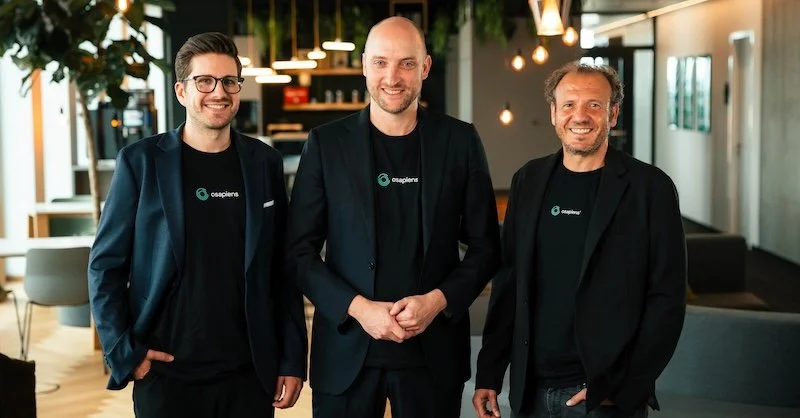2023 RTIH Innovation Awards Roundtable: future of retail is blended and data and experience led
Ahead of the 2023 RTIH Innovation Awards Ceremony on 29th November, industry experts from the likes of Primark, Footasylum, Headlam, Marie Curie, Crew Clothing, Studenac and EE came together for a roundtable discussion at the Frobrisher Boardroom at the Barbican in the City of London, with the latter two sharing experiential case studies with EY, IGD, PMC, CADS, and others. Selected excerpts follow.
Attendees at the roundtable debated the future of physical and virtual store integration, under the moderation of Danny Rappaport, Director of Consulting at PMC, the metaverse, AI, security and theft prevention, social media and modern consumer behaviour and desires, plus the role of technology in meeting them in-store or in the supply chain.
“There is a symbiosis now between online and physical retail offerings, with each supporting the other,” said Nina Mimica, Chief Innovation Officer at Croatian retailer Studenac.
The relationship can be mutually beneficial or parasitic depending on how it is handled by the retailer. For instance, Studenac has 1,100 shops in Croatia now but also offers the Wolt delivery service, so you can get virtually ordered groceries delivered to your home.
“We’ve opened up small container pop-up stores of 14 square metres at Croatian beaches, festivals and so on along the Adriatic coast as well. This gives us a quick and easy way to enhance our physical presence without undue paperwork, get growth, data, and so on,” said Mimica as she shared an experiential case study that was only possible because of technology that can supply stores, reserve goods, help marketing and so on in an integrated omnichannel approach.
The container project has now become an annual event and way of connecting with customers, driving sales and data collection.
The retailer also has an expansion programme, which the customer and sales data collected from pop-ups can feed into, helping to make a decision- about whether to open a permanent store in a location, buy a rival chain of local grocers, and so on.
AI and data
“Data is increasing everywhere. It helps with pricing, target marketing, branding, replenishment and deliveries in the supply chain and so on,” added Mimica, who went on to discuss how AI can help crunch this data.
Machine learning (ML) and robotic process automation (RPA) end uses in chatbots, automating stock pickers at Ocado warehouses, updating online stock checkers for customer usage, and multiple other applications from autonomous stores to front- and back-house integration was also debated at the roundtable.
However, augmented reality (AR) and the metaverse were currently no more than “a fairground showcase” for Mimica in the company’s consideration of how to use leading-edge technology.
Paul Edney, Technology Director, Channels at Primark, agreed with how important data is, commenting that the retailer uses it to tailor its products accordingly. “In Germany, for instance, they really care about sustainability, so we emphasise that more than in the US, where the customer is much more price conscious.”
“Data is key now,” he added, especially as Primark is developing its Click and Collect offering, which is a “big opportunity for us to get the 60% of customers who don’t use our website to do so in future.”
They can collect goods in-store in future, check out an online style match function, become more associated with the brand etc.
A blended omnichannel approach is still necessary, however, to “delight” and “drive the customer experience (CX),” said Edney, as he shared how barbers, nail bars, vintage rails, and other in-store innovations can help shop profits and data collection for marketing purposes, while Primark’s online expansion plans continue.
The brand keeps costs low by avoiding expensive returns and simultaneous standalone online shops. It blends the two approaches to market but remains agile to any developing trends.
Metaverse and social media
Lucy Grimes, Head of Retail Operations at EE, the mobile phone and broadband network provider in the UK that is owned by BT Group and has stores across the country, somewhat disagreed about the earlier attestation that AR and the metaverse isn’t relevant yet when she said that virtual experiences were vital in connecting with customers.
“We built a virtual EE store in the Fortnite game, for example, which must be defended against attackers, garnering prizes for participants,” she said, while adding these benefits can be accessed in the real and virtual worlds to provide linkage and integration between the two approaches. Data is the oil that fuels the link.
A blended approach to retail was recommended by the roundtable attendees, although it was accepted that the omnichannel approach in future may differ, comprising:
· physical
· and digital stores,
· but less of the expensive contact centres in future. AI automation can increasingly handle a lot of customer enquiries in that field with less staffing than has historically been needed.
Social media can be a crucial provider of customer data, sentiment and marketing-led sales strategies. But Kevin O'Brien, Chief Information Officer (CIO) at Headlam flooring, advised that retailers should think carefully about who owns the data and the connection to the customer?
“Is it you or the influencer,” he said, adding that the retailer can get a lot of data themselves anyway because customers will share contact details and other information that “they wouldn’t have done 30 years ago”.
Data can identify the best customers, sales lines, enhance customer ‘stickiness’ and so on.
O'Brien shared how Headlam’s recent pop-up store in the prestigious Covent Garden location in Central London helped them gather marketing data and how “easy” it was to “spin up a store” now using online platforms like Shopify and cloud computing, and to mine the information with data analytics.
Guy Moates, Director at CADS, a firm that designs supermarkets and has worked with Primark, among many other customers, thought that “social media is the modern equivalent of a market trader shouting out the trends aloud” and couldn’t therefore be ignored.
Ditto with the post-Covid rise in online shopping which has changed the way retailers think about shop design (they’re now additional marketing outlets as well as profit centres) and how stores align with online offerings.
Experiential regionalisation
Richard Noon, Composable Commerce Product Manager at Footasylum, which is a job title that takes the best components and technologies and combines them into a custom application, discussed how his firm launched the initially online only sevenstore high-end trainer and streetwear concept.
It then opened regional shops with their own identities in Liverpool, Manchester, and London in the UK.
The sevenstore brand links up with local artists to drive regional in-store branding and uses AI driven data analytics to do regional customer targeting and variation across its stores.
The data technology deployed also examines what ideas might be able to go nationwide - or even feed into the wider Footaslyum estate - by crunching the numbers.
Sevenstore collects data to alert customers when their shoe size comes into stock for a particularly desirable sneaker, and they send personalised messages around birthdays or favoured designers foundational dates, and so on.
“We’re getting to know a lot more about sevenstore customers,” explained Noon, while admitting the investmentis only possible because they are hig -value customers who offer a return, therefore justifying the investment.
Case study: EE Studio Stores
Asif Aziz, Retail Director, BT Group, shared an experience-based case study from the EE Studio Stores in the UK, which are intended to not only sell mobile phones – a decreasing area for telco owned shops – but also connectivity via broadband options.
They offer a glimpse into the hyper-connected “living room of the future” or “kitchen of the future” as well, where the Internet of Things (IoT) idea of your fridge automatically ordering replacement foods online when it’s running low is common.
The EE Studio Store concept, which uses heatmapping to examine in-store customer behaviour, emerged victorious at the 2023 RTIH Innovation Awards. According to Aziz, the stores seek to use data to assess household needs and value, and offer:
· A Tech Library: stocked with the latest tablets, mobile phone, gadgets, streaming possibilities and so on.
· A Digital Spa: consumers can look at how they use technology, what is possible, what is safe and so on. Tech guru appointments are also encouraged, and staff are supported in the back-end with extra customer data ahead of meetings to improve their ability to serve and up-sell the customer.
· Coffees, WiFi and pleasant experiences: encourage customers to work in EE Studio Stores and hang out there, alongside accessing all their technology needs.
“The idea is to drive more revenue and broaden our customer base,” said Aziz, who was candid about “necessity being the mother of invention” in this approach as traditional mobile telco shops in everyday high streets are facing profitability issues because consumers are replacing their phones less often.
This is why the EE Studio Stores are initially focused on high-end shopping centres in Manchester, London and Bluewater in Kent to reflect the pivot towards premium experiential services in-store.
Operating costs and returns
Complex and expensive returns policies for online retailers continues to be a problem. It is alleviated somewhat for blended companies that still have shops where goods can be returned and loaded onto lorries that are servicing the supply chain anyway.
“The numbers often indicate that direct online customers are the way forward. But once you drill down into the cost of returns, online advertising and so on it isn’t so clear,” said Mike Cadden, Interim Chief Technology Officer (CTO) at Marie Curie, which runs charity shops in the UK, online donation drives etc.
The high cost of returns was debated at the roundtable alongside the other operational cost increases that retailers are facing from rising staff wages and rates, security prevention costs to stop thieves, and consumers just generally being more price aware than ever during the present cost-of-living crisis.
This perfect storm means there isn’t much innovation budget left for retailers, in comparison to say a retail bank, but attendees did agree it’s still vital – and possible – to innovate.
Security concern and costs on the rise
“A large percentage of tech budget is now going on security in-store,” said Primark’s Edney, adding they are “now looking at security risk when deciding where we open a store.”
Losses from the rise in theft associated with the rise in the cost-of-living and a fall in police numbers is now a real concern for UK retailers.
Footasylum’s Noon commented “investment in this area has gone through the roof”, but this takes away budget from elsewhere.
His firm uses RFID technology as a preventative anti-theft measure. But Toby Pickard, Global Insight Leader at IGD, also recommended using CCTV to identify known shoplifters and getting a guard to stand in that aisle, plus using weight triggers for expensive items picked up from shelves, and so on.
PMC’s Rappaport said: “The cost of stores is going up.”
This is driven by increased security costs, wages linked to rising inflation, debt costs and many other factors. The fact that the global economy is struggling in the wake of geopolitical and macroeconomic factors like post-Covid debt, the war in Ukraine and spike in oil prices cannot be ignored.
Some of these costs apply to the online channel too, however, and they’re not necessarily in competition with stores anymore as the blended approach combining the benefits of both approaches to market becomes more common in the retail sector.
Whatever money is invested during these tough times needs to show a return on investment (RoI) or a cost reduction in the back office supply chain.
Conclusions
Whatever approach you take, Marie Curie’s Cadden reminded attendees that “customers don’t think deeply about channels” and the fundamentals of retail don’t change. “If you get the right product you will do well.”
The mantra of “right product, right price” is something Primark’s Edney, agreed with as the roundtable concluded, “especially as budgets are presently tight.”
There is no magic silver bullet to success. Technology can help, but only if it aligns with the people and process in an integrated omnichannel fashion. Good planning, experience, and a zeal to meet the customer’s needs still count as the foundation stone to success.
About the author
Neil Ainger is a hugely experienced freelance business and technology journalist. Further details here.
















Continue reading…